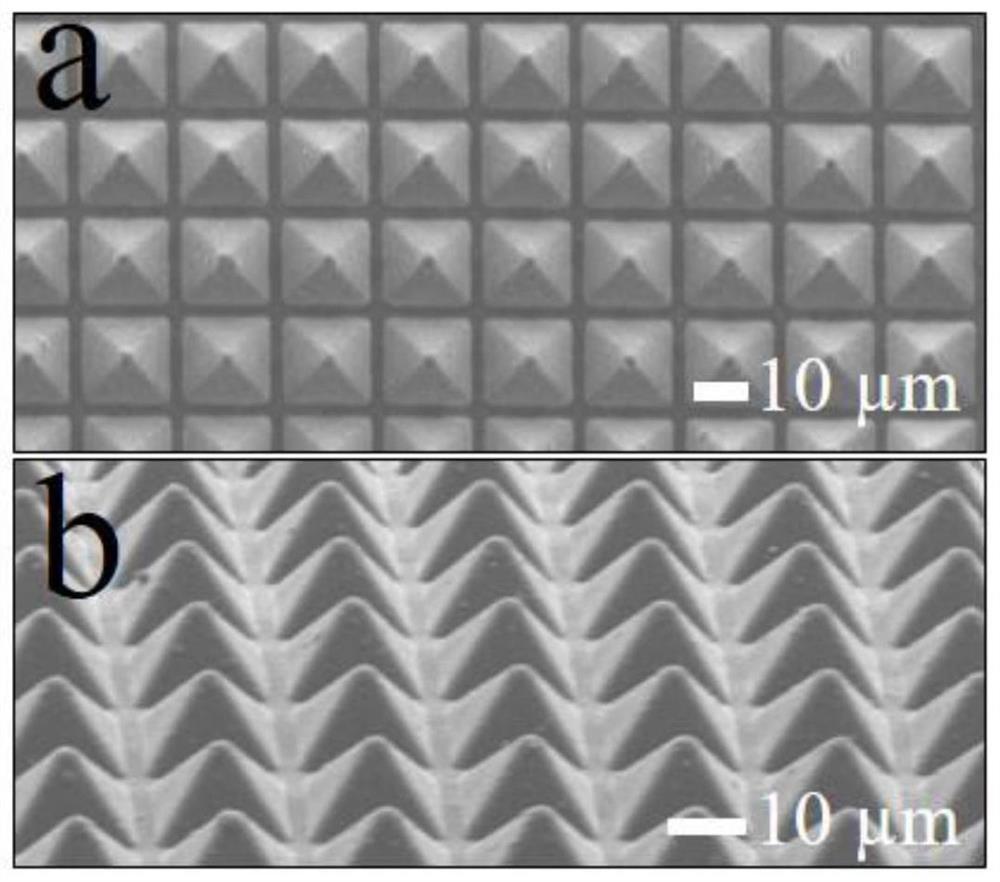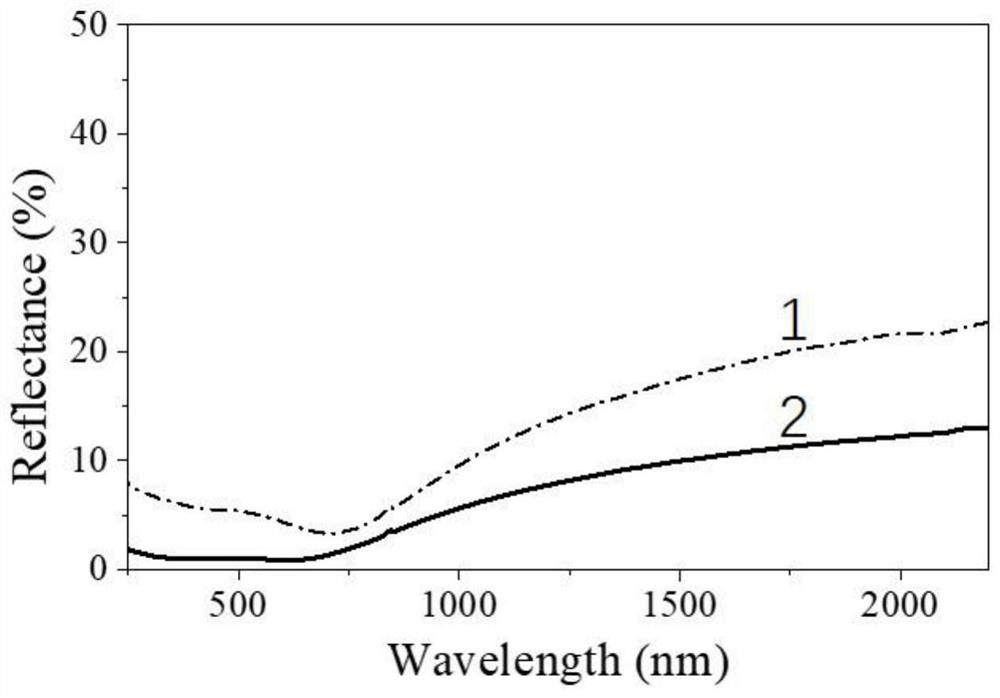Preparation method and application of polypyrrole photothermal film for intercepting volatile organic compounds in water pollution
A technology for volatile organic compounds and water pollution, applied in water pollutants, water/sewage treatment, general water supply conservation, etc., can solve the problems that volatile organic compounds cannot be separated, and volatile biological organic compounds cannot be separated, so as to increase light absorption. area, improving photothermal conversion rate, and the effect of simple method
- Summary
- Abstract
- Description
- Claims
- Application Information
AI Technical Summary
Problems solved by technology
Method used
Image
Examples
specific Embodiment approach 1
[0043] Embodiment 1: A method for preparing a polypyrrole photothermal film for intercepting volatile organics in water body pollution according to this embodiment is carried out in the following steps:
[0044] Step 1. Spin-coat photoresist positive resist on the surface of the silicon wafer with a 1 μm oxide layer on the surface;
[0045] Step 2, preparing a square grid array structure with a side length of 5 μm by photolithography;
[0046] Step 3. Soak and elute the silicon wafer after photolithography in step 2 in a mixed solution composed of hydrogen fluoride and ammonium fluoride for 5 minutes to remove exposed silicon dioxide; wherein the volume ratio of hydrogen fluoride to ammonium fluoride is 7:1, so The mass concentration of hydrogen fluoride is 49%, and the mass concentration of ammonium fluoride is 40%;
[0047]Step 4, placing the silicon wafer after step 3 in a KOH solution with a mass concentration of 35% for treatment, the treatment temperature is 70° C. and ...
specific Embodiment approach 2
[0050] Specific embodiment two: the application of the polypyrrole photothermal film prepared by specific embodiment one is as follows:
[0051] The polypyrrole photothermal film prepared in Embodiment 1 is used to intercept phenol in water pollution. The specific process is: in the process of evaporating the phenol solution, the polypyrrole cone film prepared in Embodiment 1 is attached to an open glass container Seal the open end of the open end, and then buckle it upside down on the surface of the phenol solution to ensure that the phenol solution and the polypyrrole cone membrane are fully infiltrated and in contact. Light is injected from the bottom of the glass container and reaches the polypyrrole membrane to heat the evaporated water, which condenses on the wall of the glass container for recovery detection.
[0052] Comparative experiment; use different photothermal materials to carry out barrier test on the phenol solution with an initial concentration of 5 mg / L conf...
specific Embodiment approach 3
[0055] Specific Embodiment Three: A method for preparing a polypyrrole photothermal film for intercepting volatile organics in water body pollution according to this embodiment is carried out in the following steps:
[0056] Step 1. Spin-coat photoresist positive resist on the surface of the silicon wafer with a 1 μm oxide layer on the surface;
[0057] Step 2, preparing a square grid array structure with a side length of 20 μm by photolithography;
[0058] Step 3. Soak and elute the silicon wafer after photolithography in step 2 in a mixed solution composed of hydrogen fluoride and ammonium fluoride for 5 minutes to remove exposed silicon dioxide; wherein the volume ratio of hydrogen fluoride to ammonium fluoride is 7:1, so The mass concentration of hydrogen fluoride is 49%, and the mass concentration of ammonium fluoride is 40%;
[0059] Step 4, placing the silicon wafer after step 3 in a KOH solution with a mass concentration of 35% for treatment, the treatment temperature...
PUM
| Property | Measurement | Unit |
|---|---|---|
| length | aaaaa | aaaaa |
| height | aaaaa | aaaaa |
| thickness | aaaaa | aaaaa |
Abstract
Description
Claims
Application Information
 Login to View More
Login to View More - R&D
- Intellectual Property
- Life Sciences
- Materials
- Tech Scout
- Unparalleled Data Quality
- Higher Quality Content
- 60% Fewer Hallucinations
Browse by: Latest US Patents, China's latest patents, Technical Efficacy Thesaurus, Application Domain, Technology Topic, Popular Technical Reports.
© 2025 PatSnap. All rights reserved.Legal|Privacy policy|Modern Slavery Act Transparency Statement|Sitemap|About US| Contact US: help@patsnap.com



